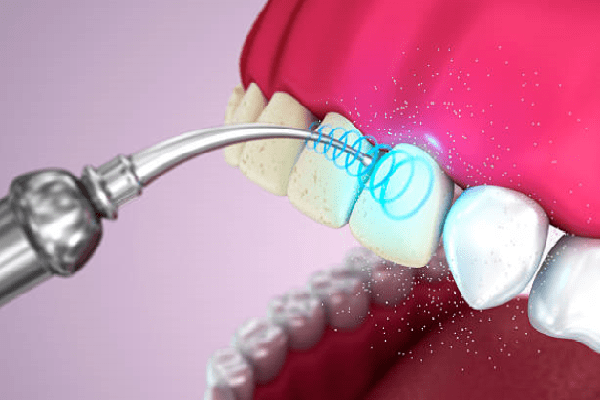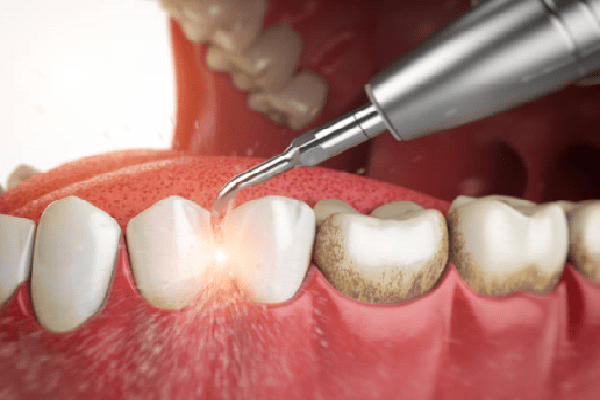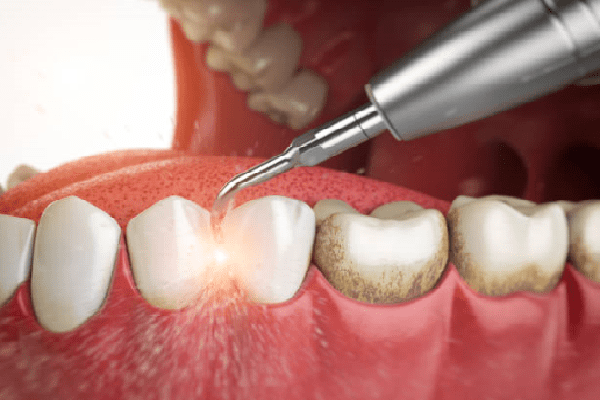Dentistry >>>> How to remove plaque from teeth?
How to remove plaque from teeth?

Teeth need daily cleaning - this gives them a neat look and natural shine, which provides the teeth with a layer of enamel. Any toothpaste or tooth powder and a medium-hard bristle brush will provide your teeth with a pleasant appearance and protection from aggression from microorganisms that inhabit the oral cavity. But what to do when the brush does not cope with cleaning, the plaque does not disappear anywhere, but on the contrary, thickens every day and occupies more and more areas on the surface of the tooth? In this case, dentistry has several methods of compulsory professional cleaning of teeth from plaque.

What can a dentist offer for cleaning plaque?
Firstly, an instrumental method of cleaning plaque from teeth manually using a special set of tools. This opportunity for plaque removal is used when ultrasound or ultradispersed plaque removal is not effective due to the fact that plaque is located in gingival pockets and is difficult to access for equipment.
Instrumental teeth cleaning is also used when there are contraindications for the use of ultrasound equipment:
- The presence of milk teeth or malocclusion in children;
- Arrhythmias (especially atrial fibrillation);
- An implanted pacemaker;
- Titanium implants in the oral cavity;
- Sintered or all-ceramic structures in the oral cavity;
- Infectious diseases (AIDS, sexually transmitted diseases, tuberculosis, hepatitis);
- Increased sensitivity of the teeth;
- Vomiting reflex;
- Signs of tooth demineralization;
- Chronic respiratory diseases ( bronchitis, asthma, emphysema);
- The presence of transplanted organs in a patient.

What dental deposits are removed with instruments? These are those dental deposits that are located on the surface of the enamel or in the gum pocket and have a rigid structure: odontolith, dental plaque.
Secondly, hardware methods for cleaning teeth using ultrasound or abrasive materials. The scaler device generates sound vibrations in the range of 25000-30000 Hz and transmits them to replaceable tips, which knock down hard particles of dental plaque. The procedure is recommended to be done under local anesthesia, since the sensations when working with ultrasound are difficult to tolerate without anesthesia. In one session, the teeth of one jaw are cleaned, and depending on the multiplicity of solid plaque elements and their composition, the procedure can last from an hour to two hours. A scaler is used to remove tartar.
To remove small odontolith, plaque from dyes (coffee, tea, cigarettes, food colors) or plaque Priestleys use the method of cleaning teeth by blasting the surfaces of teeth with fine abrasives . The technique was developed by Swiss specialists and is called "Air flow". In the Air flow method, the method of sandblasting metals has been adopted, only sodium bicarbonate (soda) is used instead of sand, in addition to the air flow, water is also supplied to soften the action, and the tooth plays the role of the processed material. The abrasive mixture contains aromatic additives that give, among other things, freshness to the oral cavity. The procedure is carried out within 30 minutes - an hour. Requires the use of special dust protection equipment by the patient (glasses and caps).
There are contraindications to this technique:
- Inflammatory diseases of the gums or oral mucosa;
- Chronic respiratory diseases (asthma, bronchitis, emphysema);
- Excessive tartar deposits.
All of the listed methods of cleaning teeth are not mutually exclusive, if there are no contraindications, and can be considered as special cases of teeth surface whitening, since they give teeth a natural appearance, remove a dull shade, and return teeth to their natural color.
There is also a method for dissolving dental calculus using chemicals. For this, solutions of acids and alkalis of low concentration are used in the form of gels or other consistency. This method serves as an auxiliary rather than an independent means of removing hard plaque, since it softens during its use not only tartar, but also tooth tissue. Dentists try to avoid using this technique, as its destructive effect is much greater than the benefits it brings.
The pharmaceutical industry offers special-action toothpastes for home cleaning teeth and preventing the formation of stubborn plaque. The chemical composition also determines the scope of action of such a toothpaste:
- Pyrophosphates are inhibitors of oxidation processes (slow down oxidative processes), play the role of a bacteriostatic agent,
- Citric acid salts have a whitening effect and regulate the acidity of the environment, and also act as a preservative for the toothpaste itself,
- Triclosan is a broad-spectrum antiseptic that inhibits the multiplication of pathogenic microorganisms (but some of them develop biological resistance to triclosan, which makes it useless over time),
- Crystalline substances, such as soda, act as abrasive materials for removing plaque.
This toothpaste removes soft plaque well. If plaque is not removed from the teeth using a conventional medium hardness toothbrush, then the pastes with abrasive will be useless, therefore, complex plaque must be removed professionally in the dentist's office.

Read

Read



























